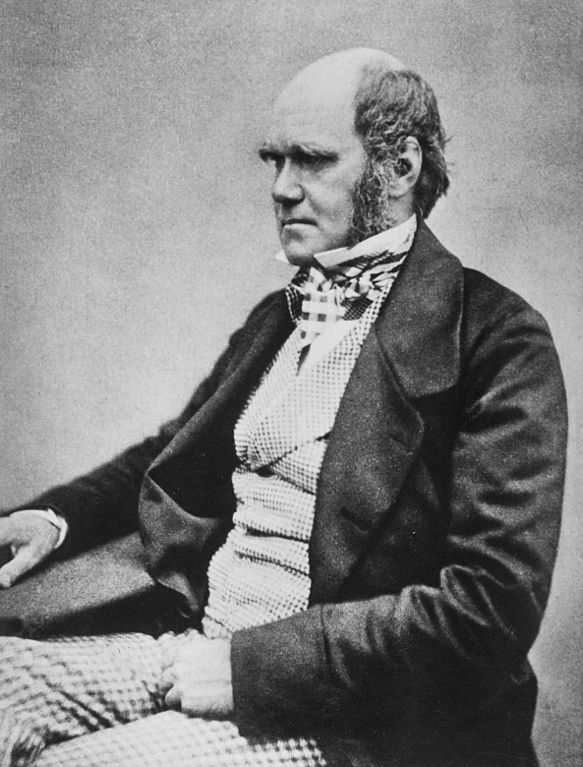
Evolution Theory
Questions and Answers
Theodore C. Goldsmith
What is an evolutionary mechanics theory?
An evolutionary mechanics theory attempts to describe the
evolution process, the “how it works” aspect of evolution.
What is Darwin’s survival-of-the-fittest or natural selection evolutionary
mechanics theory?
In 1859 Darwin described an
evolutionary process in which
evolution caused organisms to acquire evolved inheritable design
characteristics (traits) that caused individual members of a species possessing
the trait to produce more adult descendants than those not possessing the trait.
Darwin’s concept plausibly fits the vast majority of observed traits and is
widely thought to be a comprehensive explanation for the evolution process.
Why are genetics discoveries important to evolutionary mechanics
theories?
Are there current scientific disagreements regarding evolution theory?
There is very little disagreement
regarding the fact
of evolution. Current species are descended from earlier and different species
and the evolution of Earth life has progressively and accumulatively continued
for billions of years starting from single-cell organisms. Darwin’s
survival-of-the-fittest concept plausibly fits the vast majority of observations
concerning organism designs. However, some observations, specifically including
biological aging and animal altruism, did not fit eventually leading to multiple proposed modifications to
Darwin’s evolutionary mechanics concept.
What is the main current disagreement regarding evolutionary mechanics?
The main current disagreement
concerns the degree to which the growth and non-extinction of a species population
affects the evolution process relative to the survival and reproduction of
individuals. This issue is crucial to explaining the existance of aging because there is wide agreement that
aging reduces an individual's
ability to reproduce, at least in mammals. There are now multiple theories to
the effect that aging increases
a population’s ability to avoid extinction and grow.
What is an evolutionary theory of
aging?
An
evolutionary theory of aging attempts to explain how aging relates to the
evolution process and more specifically, why senescence varies so much between
species and otherwise resembles evolved inherited species-specific characteristics
(traits) of organisms.
What is phenotypic linkage and why
is it important to evolutionary mechanics theories?
Most
elements of an organism’s design have a relationship with the other elements.
Therefore, changing any one element (e.g. femur length) typically requires
complementary “linked” changes to other design elements such as muscles,
tendons, and blood supply to result in a net fitness benefit. This has
implications for the nature of the evolution process, particularly regarding
time-scale.
What is a genomic linkage and why is
it important?
The
genomic design of an organism can cause otherwise unrelated phenotypic traits to
be linked to each other in such a way as to inhibit the evolution of an organism
design that contains one of the traits without the other. Multiple aspects of a
diploid
organism’s genomic design such as pleiotropy, chromosomes, and genetic distance
can result in such a genomic linkage.
Why is selective breeding not like
evolution?
Selective
breeding is directed at enhancing or attenuating a few organism traits that vary
between individuals capable of being interbred with relatively little concern
about inadvertent changes to other traits and operates on a very short time
scale. Evolution is concerned with the combined net effect of all of an
organism’s traits on fitness and because of many inter-trait linkage mechanisms
is a much more complex and a very much longer process. Evolution can alter
traits that do not vary between individual members of a population because
mutations can introduce new variations.
What is pleiotropy?
Pleiotropy
refers to the observation that a single gene can affect more than one phenotypic
property. Single-gene genetic diseases can have multiple diverse symptoms.
Pleiotropy is one form of genomic linkage.
What is the population vs. individual
controversy in evolutionary mechanics?
Darwin’s
evolutionary mechanics concept is very individual-oriented: The evolution
process selects traits that aid an individual possessing the trait to survive
and reproduce better than an individual lacking the trait. Subsequent
evolutionary mechanics theories are more population-oriented and consider that
the evolution process is driven by characteristics and needs of a population.
Evolution operates to increase the chance that a population will avoid
extinction. There are still fierce arguments as to which or which combination of
theories is correct.
What is group selection?
Group
selection is one of a family of post-1960 theories to the effect that a benefit
to the survival of a group of individuals can offset individual disadvantage and
cause the evolution of an individually adverse trait like senescence or animal
altruism. Variations
of this idea (e.g. kin selection, small group selection, species-level group
selection) vary mainly regarding
the size of the population considered. Some programmed aging theories are based
on this idea.
What is evolvability theory?
Evolvability
theory suggests that an organism’s ability to evolve (i.e. evolvability) can
itself be affected by evolved organism design characteristics (traits), and that
further, a trait that increases evolvability can be evolved and retained even if
it causes some individual disadvantage. An increase in evolvability benefits a
population by allowing it to adapt more rapidly or precisely to changes in its
external world. Evolvability is one of the post-1960 population-oriented
theories.
What was the Scopes "Monkey" Trial of evolution theory?
How does Intelligent Design relate to evolution theory?
Intelligent Design (~1987) proponents hold that evolution theory is invalid and that the design of each Earth species is the individual result of the operation of an intelligent designer that may or may not be God. Intelligent Design is widely seen as an attempt to avoid the U.S. prohibition on the teaching of Creationism in U.S. public schools in place of or in addition to evolution theory.
See Also:
Aging Theory Info Programmed Aging Info Introduction to Biological Aging Theory
Copyright © 2020 Azinet Press